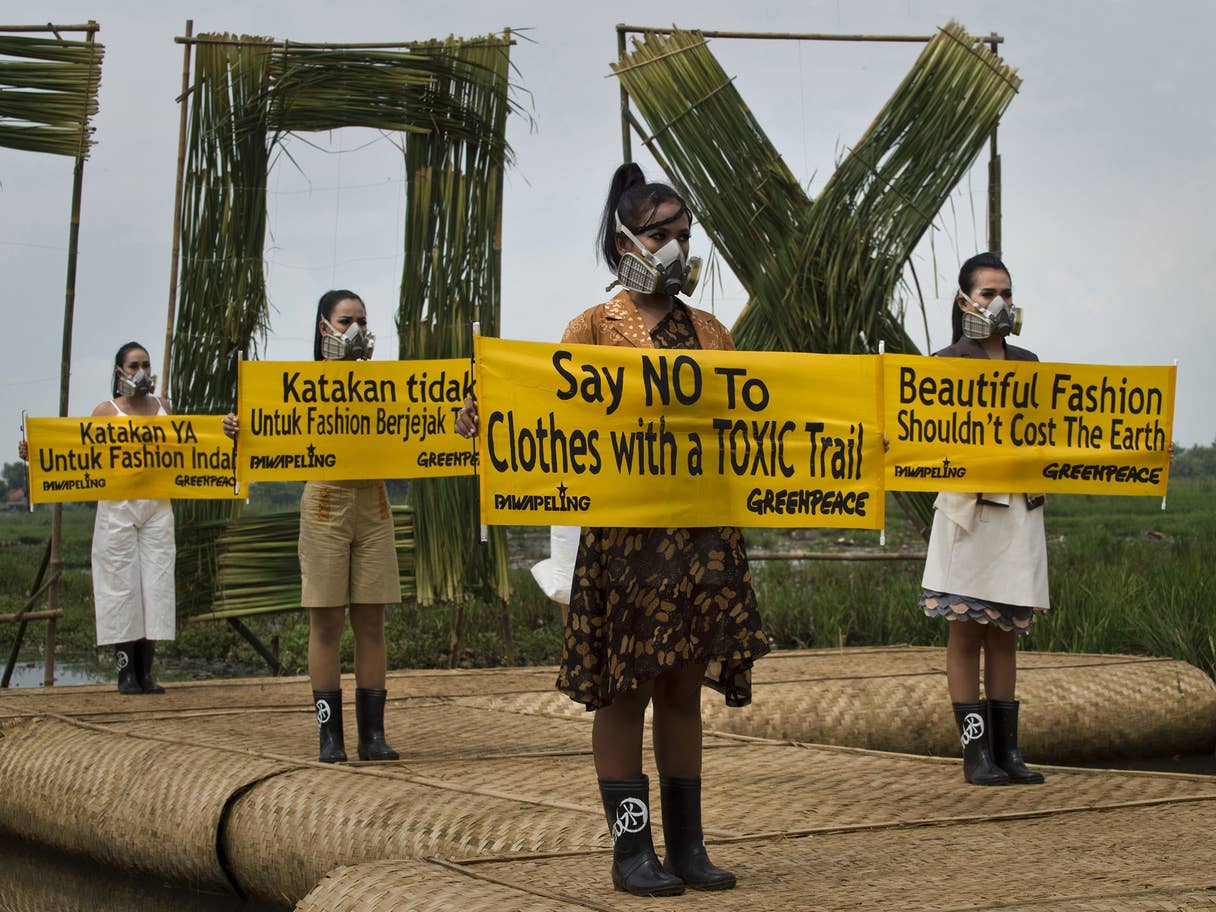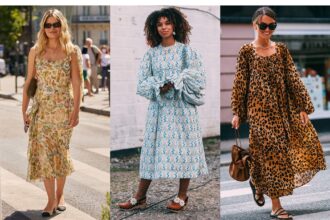Introduction to Sustainable Fashion
Fashion is a powerful form of self-expression. It allows us to showcase our personalities, creativity, and style. However, the fashion industry has a dark side that often goes unnoticed. As consumers, we are faced with choices that can impact not just our wardrobes but also the planet.
Sustainable fashion is more than just a trend; it’s a movement towards responsible consumption and environmentally friendly practices. Imagine being able to look good while making conscious decisions that contribute to saving the planet. With sustainable fashion, you don’t have to sacrifice style for ethics—you can embrace both.
Join us as we explore how you can transform your wardrobe into one that’s chic and eco-friendly. It’s time to make thoughtful fashion choices that reflect your values and help create a better world for future generations. Let’s dive into this exciting journey together!
Fast Fashion vs. Sustainable Fashion
Fast fashion thrives on rapid production and low prices. It capitalizes on trends that change almost overnight, tempting consumers with the allure of affordability. Yet, this model comes at a high environmental cost.
In contrast, sustainable fashion emphasizes quality over quantity. It focuses on timeless styles crafted from eco-friendly materials. This approach encourages thoughtful consumption rather than impulsive buying.
The stark difference lies in their impact. Fast fashion often exploits labor and generates excessive waste. Sustainable brands prioritize ethical practices and aim to reduce their carbon footprint.
Choosing sustainable fashion is not just about personal style; it’s about making a statement for the planet. Each garment tells a story rooted in sustainability, delivering both elegance and conscience to your wardrobe choices.
The Environmental Impact of Fast Fashion
Fast fashion is a major culprit in today’s environmental crisis. It promotes a culture of disposability, leading to mountains of textile waste. Each year, millions of tons end up in landfills, where they take decades to decompose.
The production process also wreaks havoc on our planet. Factories consume vast amounts of water and energy while releasing toxic chemicals into the air and waterways. This not only harms local ecosystems but also contributes to global pollution.
Moreover, fast fashion relies heavily on non-renewable resources like fossil fuels for synthetic fabrics. The carbon footprint associated with this manufacturing cycle is staggering.
Consumers often overlook these impacts as trends change rapidly, driving people to buy more than they need. By understanding the hidden costs of fast fashion, we can make informed choices that align with sustainable values.
Seeking alternatives becomes essential if we seek to save the planet together.
Benefits of Choosing Sustainable Fashion
Choosing sustainable fashion has myriad advantages that go beyond aesthetics. First, it often leads to higher quality garments. These pieces are made with care and durable materials, ensuring they last longer in your closet.
Sustainable fashion also promotes ethical labor practices. Many brands prioritize fair wages and safe working conditions for their workers, making each purchase a step towards social responsibility.
Additionally, embracing sustainable clothing fosters creativity and individuality. With unique designs from eco-conscious brands, you can stand out while supporting the planet.
Investing in this style positively impacts the environment by reducing waste and carbon footprints. Each thoughtful choice contributes to a healthier ecosystem.
Opting for sustainable options helps shift industry norms over time. As more consumers demand ethical practices, we encourage positive change across the entire fashion landscape.
How to Incorporate Sustainability into Your Wardrobe
Incorporating sustainability into your wardrobe can be both fun and fulfilling. Start by assessing what you already own. Curate your closet; keep pieces that you love and wear often. Donate items that no longer serve you.
Next, embrace the art of layering. This technique not only extends the life of your outfits but also adds a unique touch to your style. You’ll find new ways to mix and match without buying more.
When shopping, prioritize quality over quantity. Invest in versatile staples that stand the test of time rather than fleeting trends. Look for brands committed to ethical practices.
Don’t forget about accessories! Sustainable jewelry or bags can elevate any outfit while supporting eco-friendly initiatives.
Try hosting clothing swaps with friends or family members. It’s a great way to refresh your wardrobe without spending money or contributing to waste.
Eco-Friendly Fabrics and Materials for Clothing
Eco-friendly fabrics are becoming the go-to choice for the conscious consumer. These materials reduce harm to our planet while offering stylish options.
Organic cotton is a favorite. Grown without harmful pesticides, it’s gentle on both your skin and the environment. Linen made from flax requires less water and energy, making it another great alternative.
Bamboo fabric stands out for its sustainability. It grows quickly and absorbs CO2 effectively. Plus, it’s naturally antibacterial and breathable—a win-win!
Recycled polyester turns waste into wearable art. By using plastic bottles or discarded textiles, brands can create stunning pieces that help prevent landfill overflow.
Hemp is often overlooked but deserves more attention. It needs minimal resources to grow and enriches soil health during cultivation.
Choosing eco-friendly fabrics not only enhances your wardrobe but also supports a movement toward thoughtful fashion that prioritizes our planet’s well-being.
Tips for Shopping Ethically and Responsibly
Shopping ethically and responsibly starts with awareness. Familiarize yourself with brands that prioritize sustainable practices. Look for those committed to fair labor conditions and environmentally friendly processes.
Before making a purchase, check the materials used in the clothing. Opt for organic or recycled fabrics whenever possible. These choices not only reduce waste but also minimize harmful chemicals.
Another tip is to research company policies regarding sourcing and production methods. Transparency is key; brands should openly share their supply chain details.
Don’t forget about certifications like Fair Trade or GOTS (Global Organic Textile Standard). These labels can guide you toward more ethical options.
Consider your purchasing habits. Adopting a minimalist approach leads to fewer impulse buys and encourages investment in quality pieces that last longer—truly a hallmark of thoughtful fashion.
Thrift Shopping and Second-Hand Clothing
Thrift shopping is like a treasure hunt. Each rack holds unique finds, from vintage jackets to retro dresses. The thrill of discovery makes every trip exciting.
Second-hand clothing carries stories and character that new items often lack. You can express your individuality through one-of-a-kind pieces, setting yourself apart in a world dominated by fast fashion.
Plus, thrift stores usually offer incredible prices. Investing less money for great quality means you can refresh your wardrobe more frequently without guilt.
By choosing pre-loved garments, you’re also reducing waste and minimizing the demand for new production. This simple choice supports sustainability while adding flair to your style.
Many thrift shops support local charities or community projects too. Shopping here doesn’t just benefit you; it helps those around you as well. Embrace the charm of second-hand fashion—it’s stylish and conscious living rolled into one delightful experience!
Supporting Sustainable Fashion Brands
When you choose to support sustainable fashion brands, you’re making a powerful statement. These companies prioritize ethical practices and environmentally friendly materials.
Look for labels that are transparent about their production processes. Brands should share information about sourcing, labor conditions, and their environmental impact. This level of transparency builds trust.
Many sustainable brands also focus on local craftsmanship. By supporting them, you help uplift communities while reducing carbon footprints from transportation.
You can often find unique designs that stand out in your wardrobe. Sustainable doesn’t mean boring; it means creativity combined with responsibility.
As consumers become more aware of the effects of fast fashion, many smaller brands emerge with innovative solutions to traditional styles. This shift encourages the industry to rethink its practices entirely.
Every purchase becomes a conscious choice towards a healthier planet when you shop sustainably. Your style can reflect your values beautifully and meaningfully.
Thoughtful Fashion
Embracing thoughtful fashion means making choices that reflect your values and contribute positively to the world. It’s about prioritizing quality over quantity, opting for timeless pieces that withstand trends and stand the test of time.
Consider the journey behind each garment you own. Who made it? Under what conditions? By considering these questions, you become more engaged in your shopping habits. Thoughtful fashion encourages us to see clothing as an investment rather than a disposable commodity.
Additionally, sharing your journey with others can inspire change within your community. Advocate for sustainable practices by discussing them openly on social media or at local events. Encouraging friends and family to explore sustainable options fosters a culture of mindfulness around consumption.
The beauty of sustainable fashion lies not only in its environmental benefits but also in its ability to express individuality and creativity without compromising our planet’s health. When we choose thoughtfully, we are not just dressing ourselves; we’re crafting a future where style coexists harmoniously with sustainability—truly looking good while saving the planet.










